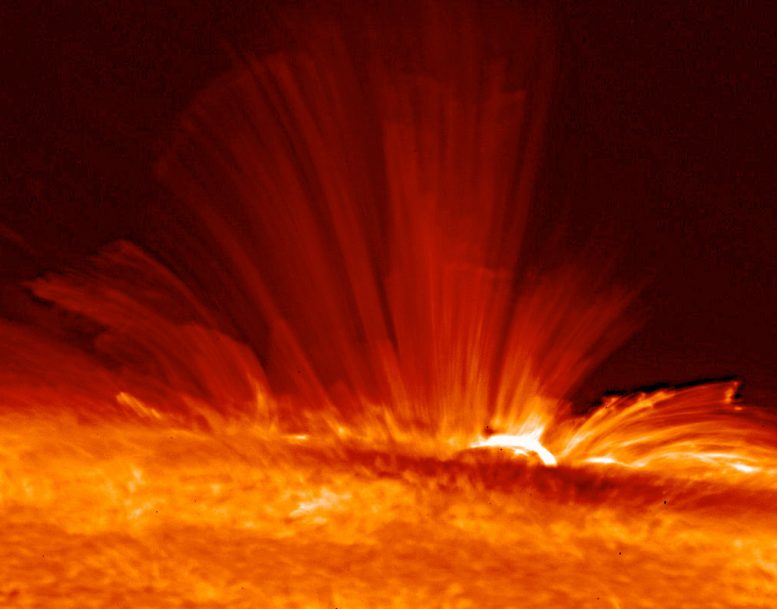
Vivid orange streamers of super-hot, electrically charged gas (plasma) arcing from the Sun’s surface unveil the structure of the solar magnetic field ascending vertically from a sunspot. Credit: Hinode, JAXA/NASA
A team of astronomers has just completed the most extensive polarization survey of stars to date, detecting magnetic fields on sixty-seven stars with twenty-one of them being classified as solar-type. That is about four times as many solar-type stars as had been previously classified.
The Sun rotates slowly, about once every 24 days at its equator although the hot gas at every latitude rotates at a slightly different rate. Rotation helps to drive the mechanisms that power stellar magnetic fields, and in slowly rotating solar-type stars also helps to explain the solar activity cycle. In the case of solar-type stars that rotate much faster than the modern-day Sun, the dynamo appears to be generated by fundamentally different mechanisms that, along with many details of solar magnetic field generation, are not well understood.
Astronomers trying to understand dynamos across a range of solar-type stars (and how they evolve) have been observing a variety of active stars, both slow and fast rotators, to probe how various physical parameters of stars enhance or inhibit dynamo processes.
Most techniques used to observe stellar magnetism rely on indirect proxies of the field, for example on characteristics of the radiation emitted by atoms. Surveys using these proxies have found clear dependencies between rotation and the stellar dynamo and the star’s magnetic cycles, among other things. Recent advances in instrumentation that can sense the polarization of the light extend these methods and have made it possible to directly measure solar-strength magnetic fields on other stars.
Harvard-Smithsonian Center for Astrophysics (CfA) astronomer Jose-Dias do Nascimento is a member of a team of astronomers that has just completed the most extensive polarization survey of stars to date. They detected magnetic fields on sixty-seven stars, twenty-one of them classified as solar-type, about four times as many solar-type stars as had been previously classified.
The scientists found that the average field increases with the stellar rotation rate and decreases with stellar age, and that its strength correlates with emission from the stars’ hot outer layers, their chromospheres. Not only does this paper represent the most extensive survey to date of its kind, it demonstrates the power of the polarization technique. It signals that it is possible to greatly expand the study of magnetic fields in solar-type stars, which efforts will continue to improve our understanding of the surface fields in the Sun.
Reference: “A BCool magnetic snapshot survey of solar-type stars” by S. C. Marsden, P. Petit, S. V. Jeffers, J. Morin, R. Fares, A. Reiners, J.-D. do Nascimento, Jr, M. Aurière, J. Bouvier, B. D. Carter, C. Catala, B. Dintrans, J.-F. Donati, T. Gastine, M. Jardine, R. Konstantinova-Antova, J. Lanoux, F. Lignières, A. Morgenthaler, J. C. Ramìrez-Vèlez, S. Théado, V. Van Grootel and the BCool Collaboration, 11 November 2014, Monthly Notices of the Royal Astronomical Society.
DOI: 10.1093/mnras/stu1663

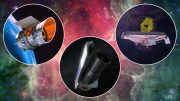
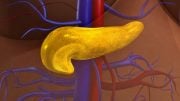


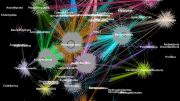


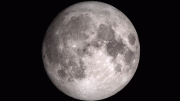
Be the first to comment on "Astronomers Detect Magnetic Fields on Solar-Type Stars"